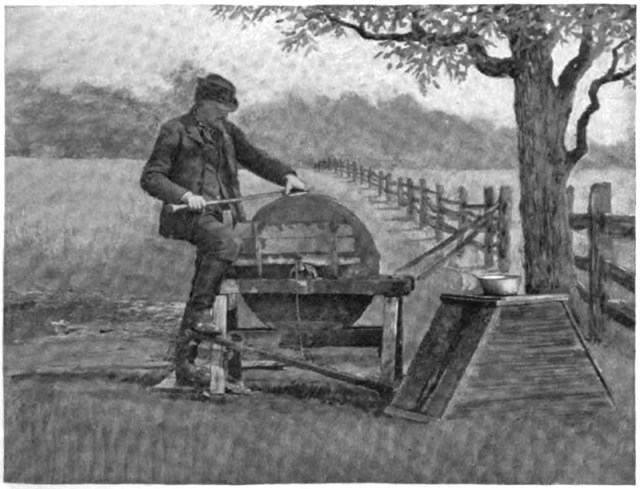
Read the other installments in the “Sharpen This” series via this link.
When you learn to sharpen, I think it’s essential to do something that is normally a bad idea: Close your mind.
Let’s say you are 5 years old and starting school. The teacher says you need to learn to read, write and speak, and that you can use any and all of the words and phrases from every language on the planet.
It’s unlikely you’d be able to communicate with anyone in your class or your community. You learned the German word for “eating” and the Persian word for “sauce.” But your friend learned the Cherokee and Finnish words.
Instead, the quickest path to finding out where the bathroom is or how to microwave a burrito is to learn a language that allows you to navigate your world. Then you can figure out which other languages you might like to learn.
Sharpening is like that. Every sharpening system is has its own logic, history and subtleties. And while every system works brilliantly, mixing and matching bits from multiple systems is likely to confuse and confound.
Pick one system. It doesn’t matter if it’s oilstones, waterstones, diamonds or sandpaper. Ignore every other system out there. If someone tries to tell you that a different system is better, plug your ears and start shouting “nunga, nunga, nunga.”

Here’s why: About 70 percent of the people willing to talk about sharpening in detail are those who are new to it. They simply love their new system. It makes edges that can shave them bald with little effort whatsoever.
About 29 percent of the people willing to talk about sharpening in detail are trying to sell you sharpening equipment. Most of this equipment works fine, but you don’t need all of it (any more than you need all the handplanes in the Lee Valley catalog to make a box).
And the final 1 percent of people willing to talk about sharpening are idiots like me. I don’t think one system is particularly better than any other. I don’t sell sharpening equipment. I’ll be happy to teach you to sharpen, but you have to promise me you’ll master one sharpening system and use it exclusively for one year before changing your routine or buying different equipment.
I call this “sharpening monogamy,” and I think it’s the fastest route to the sharpest edges.
So step one is to pick one system and sign that pre-nuptial agreement, but don’t buy anything yet. First you need to understand what sharp looks like (and what dull looks like). And you need to figure out the three grits in your system of choice that will grind, hone and polish your tools.
Only then should you get out your wallet.
— Christopher Schwarz
P.S. These sharpening columns are generally not going to allow comments. Why? Well, I think this column pretty much lays out why. If you’d like to take me to task on my approach, I recommend posting your thoughts on your blog.
P.P.S. And if you think this is a “free speech” thing, please read this first.